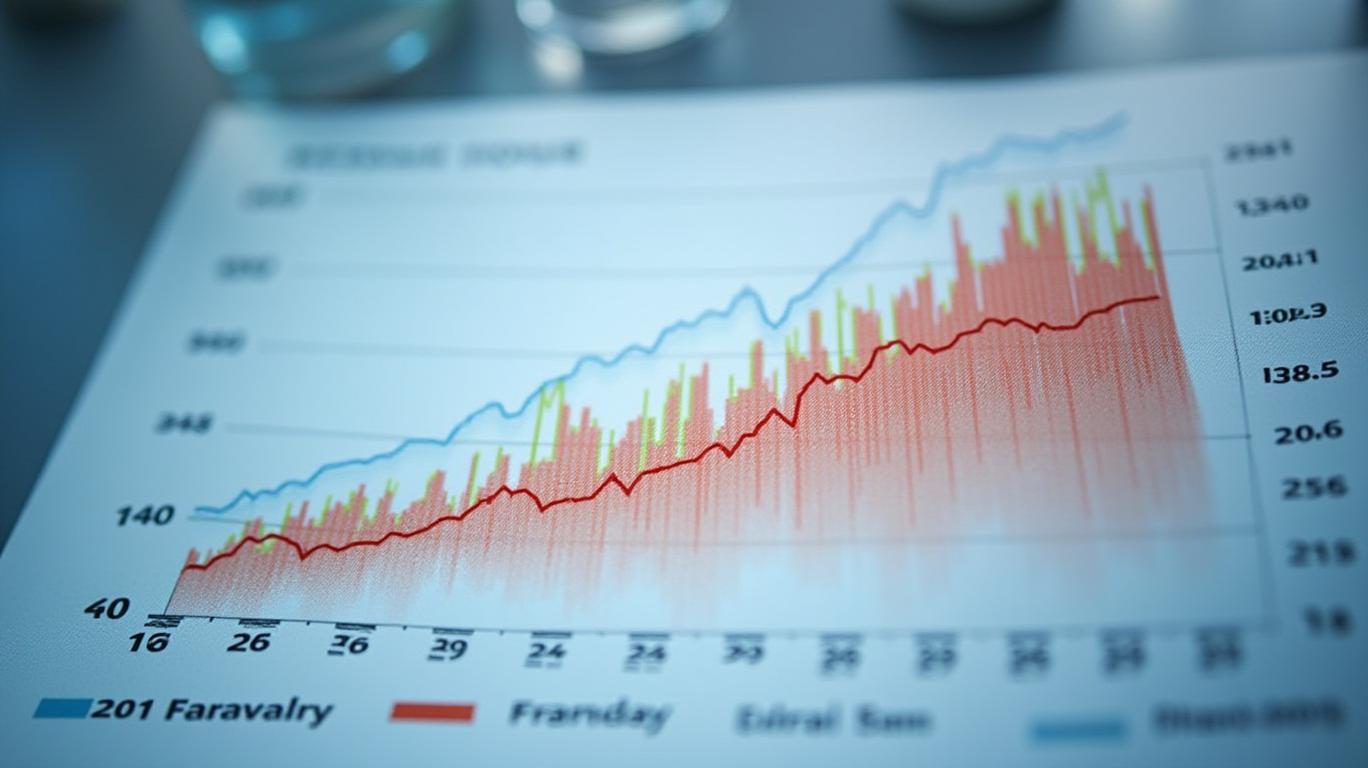Westpac's Caution Reflects Tariff-Driven Uncertainty in 2025
The global economy is navigating a treacherous path in 2025, with tariff wars and geopolitical tensions reshaping trade flows and investor confidence. Westpac, Australia’s oldest bank, has become the latest institution to temper its economic forecasts, citing extreme volatility stemming from U.S. trade policies. After revising its 2025 GDP growth projection for Australia down to 1.9% from 2.2%, the bank’s economists now emphasize uncertainty over precision. This shift underscores a broader theme: the era of confident macroeconomic predictions may be over.
Ask Aime: "Should I sell my stocks in the face of rising trade tensions? How will the Westpac GDP growth downgrade affect my portfolio?"

The Tariff Tsunami: How U.S. Policies Are Shaking Markets
The turmoil began in April 2025, when the U.S. imposed a universal 10% tariff on all imports, overriding reciprocal trade rules that had long governed its trade relationships. For Australia, this means goods that once faced tariffs as low as 2.5% under existing agreements now face a flat 10% rate. Compounding this are sector-specific tariffs:
- 25% tariffs on steel and aluminum, which have limited impact given Australia’s minimal exports to the U.S. in these sectors.
- 25% tariffs on automobiles, targeting foreign manufacturers. While Australia’s auto industry isn’t a major exporter to the U.S., the broader message—U.S. prioritization of domestic production—is clear.
Ask Aime: "Will Australia's 2025 GDP Growth Slow Down Due to U.S. Tariffs?"
The most contentious issue, however, is beef trade. The U.S. has accused Australia of maintaining a de facto ban on its beef due to biosecurity protocols tied to BSE (mad cow disease). Though Australia’s restrictions are scientifically justified, the U.S. response remains ambiguous, with potential retaliatory tariffs or non-tariff barriers looming.
Westpac’s Downgrade: A Signal of Structural Uncertainty
Westpac’s decision to trim its growth forecast reflects two key concerns:
1. Direct Trade Disruptions: Even sectors with minimal U.S. exposure (e.g., steel exports at <0.2% of GDP) face reputational and geopolitical risks. The bigger threat is indirect: Australia’s reliance on China, its largest trading partner, could amplify spillover effects if Beijing retaliates against U.S. tariffs.
- Confidence Shocks: Consumer and business sentiment have already dipped. The bank’s economists note that household spending improvements—a pillar of their revised 1.9% growth estimate—are fragile.
The bank also anticipates the Reserve Bank of Australia (RBA) will cut rates twice by year-end, lowering the cash rate to 3.35% from 4.10%. This easing aims to offset inflationary pressures, but Westpac warns that loan growth (projected at 5-6% in 2025) may remain subdued as businesses delay investment amid uncertainty.
Australia’s Playbook: Diversification and Diplomacy
The government has moved swiftly to mitigate damage:
- A $50 million support package for exporters to pivot to markets like Japan, South Korea, and the EU.
- A $1 billion Economic Resilience Program offering zero-interest loans to businesses seeking to diversify supply chains.
Historically, Australia has thrived by pivoting during trade disputes. During its 2020-2024 clash with China, it redirected barley exports to Saudi Arabia and wine to the U.S., limiting losses. Today, however, fewer “easy” markets exist. The U.S.-China trade war’s global ripple effects mean Australia’s next move is far more complex.
Geopolitical Risks: A Double-Edged Sword
The U.S. tariffs are part of a broader strategy to reorient global supply chains toward American interests. For Australia, this creates both risks and opportunities:
- Risks: Secondary tariffs could penalize Australian exporters for trading with “adversaries” like China. The OECD now forecasts global growth of just 3.1% in 2025, down from pre-tariff estimates.
- Opportunities: U.S. trade barriers may open doors for Australian exporters in China, where Beijing seeks alternatives to U.S. goods. Australia’s beef, wine, and agricultural products could regain market share—if geopolitical tensions with China don’t escalate further.
Investment Implications: Navigating the Volatility
For investors, the path forward demands caution and diversification:
1. Commodity Sectors: Australia’s iron ore and LNG exports remain resilient, but watch for Chinese demand fluctuations.
2. Financials: Westpac’s own stock () reflects broader market uncertainty. Investors should prioritize banks with strong deposit-to-loan ratios (Westpac’s is 84.5%) to mitigate funding risks.
3. Equity Markets: The S&P/ASX 200 has swung wildly, but long-term investors should focus on high-quality, defensive stocks in healthcare and utilities.
Conclusion: A Fragile Recovery Requires Resilience
Westpac’s revised forecasts and reduced confidence highlight a stark reality: tariff-driven volatility has erased the predictability once central to economic planning. While Australia’s diversified economy and policy responses may limit direct damage, the indirect risks—global inflation, supply chain disruptions, and geopolitical realignments—are existential.
The numbers tell the story:
- 1.9% GDP growth is achievable only if confidence recovers and businesses adapt.
- $1 billion in resilience funding shows government resolve, but markets need more than loans—they need stability.
- OECD’s 3.1% global growth forecast underscores the stakes for all economies.
Investors should brace for turbulence. Opportunities exist in sectors insulated from trade wars, but patience—and a diversified portfolio—are critical. As Westpac’s caution suggests, 2025 will reward the resilient, not the reckless.










I made over 150k here with an expert’s help and recommendation 🤗
She’s great connect 🇺🇸+.𝟣𝟧𝟨𝟥𝟤𝟩𝟫𝟪𝟦𝟪𝟩
I made over 150k here with an expert’s help and recommendation 🤗
She’s great connect 🇺🇸+.𝟣𝟧𝟨𝟥𝟤𝟩𝟫𝟪𝟦𝟪𝟩
She’s great connect 🇺🇸+.𝟣𝟧𝟨𝟥𝟤𝟩𝟫𝟪𝟦𝟪𝟩